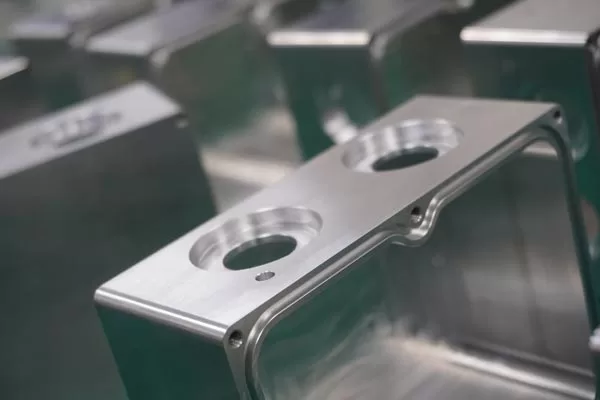What’s the difference between CNC metal and wood machining? A CNC router is a subtractive, versatile cutting process that removes material wood, plastics, composites, and metals. The machine utilizes a rotational or “router bit” to remove material from a workpiece secured in place on the cutting bed.
CNC mills or “machining centers” are used to cut harder materials like metal and alloys, offering tight tolerances and precise cutting. These machines utilize rotating cutting tools like drills or end mills to remove workpiece materials.
This post unpacks the differences between CNC mills and routers. We’ll cover how they work, their key features, and industry applications.
The Difference Between Metal CNC and Wood CNC Machines
The CNC router typically has widespread use in woodworking applications. However, it’s also used in processes for manufacturing cabinets and signs and in rapid prototyping projects. These machines are ideal for creating intricate 2D and 3D designs and are suitable for working on large projects without too much detail.
CNC routers are less precise than CNC mills and suitable for less complex prototyping projects. For high accuracy and better detailing, you’ll need a CNC mill. These machines suit a wide range of cutting applications, from decorative works to advanced aerospace parts.
Both CNC mills and routers require a trained technician to program the machine’s cutting path. However, there are differences in the programming specifics and software tools used to program the device.
CNC routers offer software emphasizing user-friendly operation and simple programming languages with graphics interfaces. This setup accommodates operators of varying degrees of expertise. CNC mills, however, utilize advanced programming languages and software to cater to complex geometries and intricate calculations for toolpaths.
CNC milling is more common for rapid prototyping projects in the automotive, aerospace, and medical industries. It’s the ideal choice for machining complex parts, offering a high degree of precision and accuracy and producing components with tight tolerances. You get excellent repeatability and the chance to scale the manufacturing process to suit your project requirements.

CNC machining parts
CNC Milling or CNC Routing for Different Materials
One of the biggest differences between CNC milling and routing is the materials they can cut for your rapid prototyping projects. CNC routers are suitable for removing material from softer workpieces made of wood, foam, plastic, and non-ferrous metals.
The CNC routing machine is less rigid and stable than a CNC mill, and it doesn’t have the power to transfer the force required to the workpiece to cut hardened metals like stainless steel or annealed materials effectively.
However, CNC mills are capable of milling these hard metals because the machine is more rigid and stable, and the tooling head is set up to deal with these metals. CNC milling is suitable for materials like titanium, stainless steel, aluminum, alloys, and hard plastics.
Metal Vs. Wood CNC – Unpacking the Differences
There are distinct differences in the capabilities of CNC mills and routers. Let’s look at a few of them in more detail.
Power, Speed, & Rigidity
CNC mills and routers differ in the power and speed they produce during operation. The CNC router typically works at lower cutting speeds and on softer materials, like wood and plastics, thereby requiring less power to operate the machine.
Conversely, CNC milling machines have a sturdier design than CNC routers, and they’re capable of operating at higher speeds. They also offer the ability to handle larger cutting forces. As a result, they’re suitable for cutting hard metals.
CNC milling machines feature a more robust spindle compared to their CNC router counterpart. The motor operating the tool head features a higher horsepower capacity to power through these tougher materials.
CNC milling machines also have a sturdy design compared to routers, and they are heavier due to the reinforced design. The increased stability and rigidity of CNC milling machines make them ideal for withstanding higher cutting forces during machining operations.
While rigid, CNC routers prioritize lightweight design and emphasize portability, as they’re often used in mobile cutting applications on job sites.
CNC Tooling
CNC mills and routers utilize different cutting tools to satisfy the task’s requirements. The CNC router features router-cutting bits with several profiles for shaping, cutting, and engraving tasks on plastics, wood, and composites.
CNC mills utilize drills, end mills, and other specialized cutting tools to create precision in tasks like drilling, cutting, and milling. Tooling options for CNC mills are diverse and feature designs for cutting different types of metal and metalworking tasks.
CNC Costs
The cost of CNC milling machines is far greater than CNC routers due to the complexity of design, reinforced construction, and unique capabilities of the milling machine to the CNC router. Building quality and manufacturing brands also play a huge role in machine costs.
You could pay several thousand dollars for a CNC milling machine, with high-end brands and models fetching hundreds of thousands of dollars for their devices.
Entry-level or hobbyist CNC routers are far more affordable and accessible for private contractors or small businesses primarily working with non-metallic materials. DIY CNC routers are available with price tags of a few hundred dollars.
